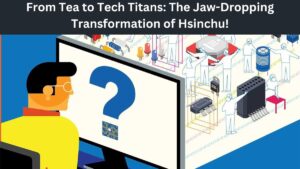In a world grappling with crumbling infrastructure, a groundbreaking solution emerges as researchers from Drexel University’s College of Engineering unveil a cutting-edge system. Faced with the imminent risk of collapsing buildings, bridges, and roads, experts emphasize the urgency of inspections and repairs. The staggering cost of addressing the aging structures, estimated at $786 billion in the US alone, reveals the extent of the crisis.

The Aging Structures Predicament: Traditional inspection methods prove to be slow, expensive, and labor-intensive, unable to keep up with the vast scale of the problem. A shortage of skilled workers, including inspectors and repairers, further exacerbates the challenge.
AI and Robotics Come to the Rescue: To tackle this crisis head-on, the Drexel University research team introduces a revolutionary system utilizing robots and machine learning. Published in the journal Automation in Construction, their innovation aims to enhance the efficiency and accuracy of infrastructure inspection and maintenance.
The Dynamic System: Comprising a computer vision module and a laser scanning module, the system employs a deep-learning algorithm called a convolutional neural network. The computer vision module analyzes high-resolution images, pinpointing regions of structural damage. Subsequently, the laser scanning module conducts a detailed scan of cracked areas, generating a 3D damage model for further analysis and monitoring.
Preventing Catastrophes with Timely Interventions: The researchers assert that their system significantly reduces the inspection workload, facilitating focused and timely interventions to avert structural failures. They liken cracks to medical symptoms that demand early diagnosis and treatment to prevent more severe problems.
The Future of AI and Robotics in Infrastructure: While acknowledging the success of their system, the researchers emphasize the need for a multi-scale robotic approach capable of handling both large and small defects. Civil infrastructures, they note, present challenges ranging from massive structures to microscopic problems.
Testing and Real-World Application: The team is currently testing and refining their system on real-world structures, collaborating with industry partners to deploy it in the field. Their ultimate goal is to save lives and resources by preventing catastrophic failures and enhancing the safety and sustainability of infrastructures.






